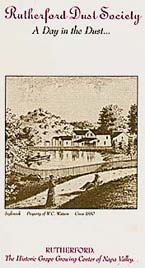
|
|
|
Select Cabernet Sauvignon Clones: History, Characteristics Clone 4. Known as the Mendoza clone, originally from Argentina, Clone 4 is a moderate producer (4-5 tons per acre) with strong flavor intensity. The clone has very good color, aromas and palate balance, with little herbal character and some spiciness. It is non heat-treated and relatively disease free.
Clone 6. The "Jackson" clone was planted by U.C. professor Hilgard in the 1880’s at the University agricultural station in Cupertino, then moved to the Field Station at Jackson in the Sierra Foothills. It was abandoned until Professor Goheen rediscovered the old vineyard about 23 years ago, identified varieties, and took cuttings. These vines exhibited no leaf roll virus, and must have been imported prior to phylloxera. It shows very dark color, firm tannins, a strong flavor profile and a distinctiveness at BV1 and BV2. It is disease-free and non heat-treated. Clone 7. Known as the Concannon or Wente clone, and a long-time workhorse of California Cabernet production, Clone 7 was sourced originally from the La Fatta Vineyard south of St. Helena, then taken by U.C. Davis for treatment. Clone 7 was widely planted in the 1970s and 1980s. Austin Goheen, retired professor at U.C. Davis, speculated that La Fatta obtained the original cuttings from the De Latour nursery at Beaulieu. This clone typically displays good fruit strength, some herbal character and moderate yields. Clone 8. Clone 8 has been widely planted since the 1970s, and is another workhorse of California Cabernet production. The cuttings for Clone 8 originated from cuttings taken from the Concannon Vineyard, vine 34V2. The wines it produces typically have good fruit strength and herbal character. Clone 29. In late 1991, Niebaum-Coppola and U.C. Davis rescued the original clone brought to the estate in 1882. This selection was used in all the legendary Inglenook vintages in the 1930s through the 1950s. The University grew a new generation of the clone that has been given the selection "29," which is characteristically opaque with a deep purple color, and telltale traits of violets and black sour cherry. Clone 337. Brought to the U.S. in a suitcase, this clone was selected in Bordeaux by the institute of research called INRA. Widely, and successfully, planted in California, the clone is appreciated for its small berries and moderate yield. The wines it produces are typically dense and complex. Clone HB. When Mr. Peju founded Peju Province Winery in 1982, the property was already planted to Cabernet Sauvignon. In 1995, the Peju’s replanted the cabernet that was on the property and called it HB Vineyard. HB are the maiden initials of Mrs. Peju, Herta Behensky. Sources. BV: Clone 4, 6, 7. Trinchero Family Estates: Clone 8. Niebaum-Coppola: Clone 29. Quintessa: Clone 337. Peju Province: HB. BACK
TO DUST |
Left Coast
Correspondent PROFILES: Tasting
Notes from Synergism Up
the Coast More Tasting Notes from the Ridge Galleron Tasting
a Legacy - C O
P I A "T"
is for... Premiere Napa Valley ® |
